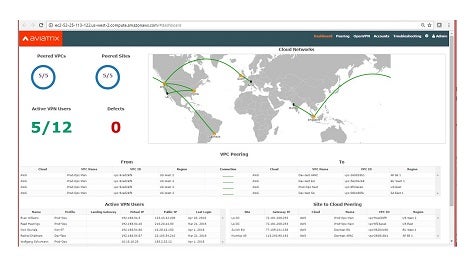At the AWS re:Invent 2016 conference today, Aviatrix and Megaport announced that they have teamed to change the way end users go about accessing applications hosted on Virtual Private Cloud (VPC) services offered by Amazon Web Services (AWS).
Today, many IT organizations essentially backhaul network traffic destined for AWS through their own data centers. The downside of that approach is that it increases overall application latency. Aviatrix developed software that makes it possible to create a virtual private network (VPN) between a remote office and AWS. The alliance with Megaport now integrates the Aviatrix software with a software-defined networking (SDN) framework that Megaport developed, which Aviatrix CEO Steven Mih says will enable that VPN to be spun in a few clicks of a mouse.
Available via the AWS Marketplace, the combined Remote Access DX Bundle offering is accessible via an AWS CloudFormation template that can be used to launch the AWS VPC and the Aviatrix VPN controller technology at the same time. AWS is also making the combined offering available as a reference architecture for use within hybrid cloud computing scenarios.
“Connecting to AWS is no longer a piecemeal solution,” says Mih.
Because the Megaport Elastic Interconnection service is software defined, Mih says IT organizations can now apply policies that limit who inside the organization gets access to AWS VPC resources. In addition, Mih says that the combined offering provides support for geolocation services that identify what VPC resources are closest to any mobile user or remote office.
With more application workloads than ever moving into the public cloud, IT organizations will clearly need to rethink how those applications are accessed. The challenge many face is that many of those workloads are a lot more fluid in nature than the type of applications that typically run on premises. As such, there’s not a lot of patience when it comes to waiting for network connections to be provisioned. As a result, the cloud may very well wind up pushing IT organizations to embrace SDN technologies regardless of how ready they are.




